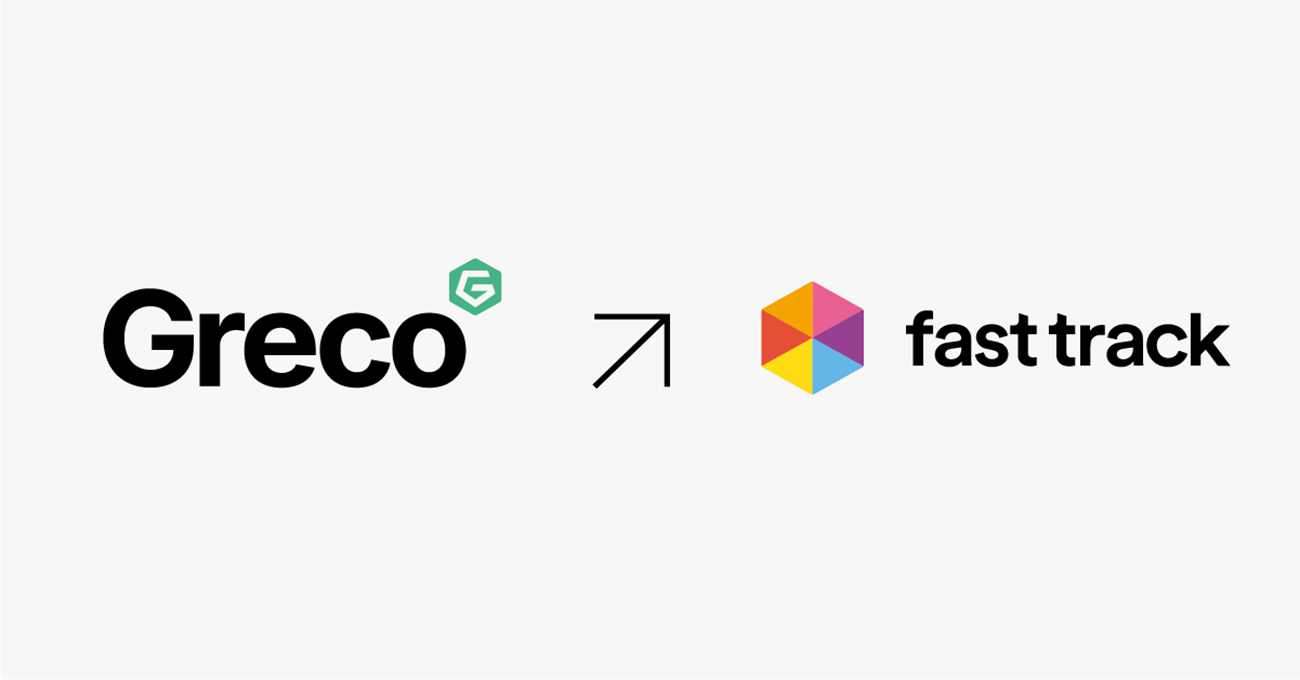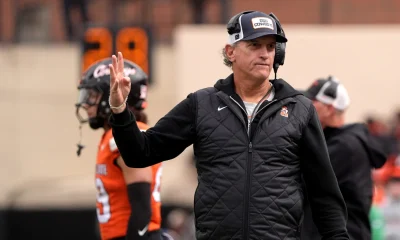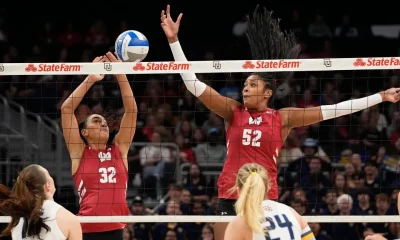




Castellum, Inc. to Participate in the “2025 Virtual Tech Conference: Discover the Innovations Reshaping Tomorrow”
VIENNA, Va., June 02, 2025 (GLOBE NEWSWIRE) — Castellum, Inc. (NYSE-American: CTM) announces that its Chief Executive Officer, Glen Ives, has been invited to present at the “2025 Virtual Tech Conference: Discover the Innovations Reshaping Tomorrow,” presented by Maxim Group LLC, on Tuesday, June 3rd – Thursday, June 5th at 9:00 a.m. EDT.
Castellum, Inc. will be taking part in the “2025 Virtual Tech Conference: Discover the Innovations Reshaping Tomorrow.” The rapid evolution of technology is paving the way for disruption across all industries, including healthcare, drones, consumer IoT, business solutions, gaming & entertainment, and more. In Maxim’s 2025 Virtual Tech Conference, emerging growth companies will explore how they are expanding their use of Quantum Computing and Artificial Intelligence (‘AI”) to position themselves for the future. Maxim Senior Analysts will facilitate engaging dialogues with CEOs and key management of diverse companies who have their attention on technology and how it will impact and grow their business.
This conference will be held live on M-Vest. To attend, sign up to become an M-Vest member.
Click here to learn more and reserve your seat
About Castellum, Inc. (NYSE-American: CTM):
Castellum, Inc. (NYSE-American: CTM) is a cybersecurity, electronic warfare, and software engineering services company focused on the federal government – https://castellumus.com/.
About Maxim Group LLC:
Maxim Group LLC is a full-service investment banking, securities and wealth management firm headquartered in New York. The firm provides a full array of financial services including investment banking; private wealth management; and global institutional equity, fixed-income and derivatives sales & trading, equity research, and prime brokerage services. Maxim Group is a registered broker-dealer with the U.S. Securities and Exchange Commission and the Municipal Securities Rulemaking Board and is a member of FINRA SIPC, and NASDAQ. To learn more about Maxim Group, visit maximgrp.com.
Contact:
Glen Ives
President and Chief Executive Officer
Phone: (703) 752-6157
[email protected]
https://castellumus.com
A photo accompanying this announcement is available at https://www.globenewswire.com/NewsRoom/AttachmentNg/ccca9ee5-42aa-4a39-9aca-a809e77194fc


British Esports has secured government funding to launch a pilot esports education program with the English Football League, targeting young people in disadvantaged communities.
The initiative, approved under a national digital inclusion fund, signals growing interest from policymakers in esports as a structured pathway for digital skills, safeguarding, and youth engagement.
The new Safe to Play campaign will run across ten football club communities and aims to reach around 400 young people. Delivered through existing football club charity programs, the project uses esports as a structured environment to support digital confidence, online safety, and wellbeing.
Each participating club will deliver a six- to eight-week program combining weekly workshops with supervised esports sessions. The content is designed to sit alongside existing youth provision, positioning esports as a tool for engagement rather than a standalone activity.
The pilot has been approved for funding by the Department for Science, Innovation and Technology under its Digital Inclusion Innovation Fund.
British Esports will act as a national partner for the project, with funding supporting facilitator training, content development, and accreditation. As part of the Play it Safe model, British Esports will deliver e-learning and one-day in-person training to 60 facilitators drawn from ten football club charities.
Training covers safeguarding, wellbeing, digital confidence, online safety, and positive esports delivery. Guidance for the program is informed by British Esports’ Duty to Care in Esports framework, which sets standards for safe and responsible participation.
EFL in the Community will oversee national coordination, governance, and monitoring, while Sheffield United’s Community Foundation is acting as the accountable body. Sheffield Hallam University is providing external advisory input.
Project partners say the pilot is intended to test whether esports-based delivery can scale across the wider EFL network, which includes 72 clubs. A successful outcome could lead to a broader rollout through club community programs nationwide.
Debbie Cook, director of community at the English Football League, says, “The Safe to Play campaign is an exciting and innovative way to support young people in our EFL Club communities. Using esports as a vehicle for digital inclusion, online safety, and wellbeing, we’re equipping disadvantaged young people with essential skills for the modern world.”
Chester King, president at British Esports, adds, “We’re incredibly grateful to receive the Government’s support for this new Safe to Play campaign with the EFL. This backing will allow us to work alongside Sheffield United’s Community Foundation and other partners to deliver vital digital skills and online safety training to young people through esports.”
The announcement follows wider government action on youth engagement, including the launch of a new National Youth Strategy supported by a £500 million investment. The strategy, titled Youth Matters, has been shaped by feedback from more than 14,000 young people across England and focuses on rebuilding youth services and addressing social isolation.

ROG showcases world-first technologies, next-generation gaming systems, and visionary collaborations that redefine gaming experiences
KEY POINTS
Two decades of gaming leadership: At its Dare to Innovate virtual event, ROG celebrates 20 years of fearless experimentation and bold innovation
Expanding gaming horizons: High-performance gaming innovation from Zephyrus laptops, Crosshair motherboards, Swift OLED monitors and more
Cross-domain collaborations: ROG, Kojima Productions combine signature peripherals and the Flow Z13-KJP
World’s first dual 16″ screen gaming laptop: ROG raises the bar of innovation to a whole new level with the pioneering Zephyrus Duo
LAS VEGAS, Jan. 5, 2026 /PRNewswire/ — ASUS Republic of Gamers (ROG) today announced its Dare to Innovate virtual event at CES 2026, unveiling the next chapter of its vision for gaming performance, design, and culture. The showcase celebrates 20 years of fearless innovation, highlighting breakthrough technologies that empower gamers and creators, while reinforcing ROG’s commitment to redefining gameplay, creation, and competitive performance worldwide.
A wide range of next-generation technologies across ROG’s gaming ecosystem is on display, including laptops, desktops, motherboards, and peripherals ― all engineered with world-first features and advanced capabilities that elevate performance and immersion.
On this 20-year milestone, ROG reflects on a legacy defined by bold concepts, pioneering engineering, and an unwavering dedication to its global community. From the groundbreaking Crosshair motherboard in 2006 to today’s cutting-edge gaming platforms, every milestone embodies the spirit of For Those Who Dare, a commitment to challenging conventions and redefining what gaming hardware can achieve.
Continuing this legacy, the ROG Lab embodies the heart of ROG’s experimental spirit, transforming ideas into tangible breakthroughs. This year’s showcase unveiled engineering advancements from the Lab, combining performance, thermal mastery, and user-focused design to elevate how gamers play, create, and connect.
ROG also extends its influence beyond technology into culture through global co-branding partnerships that merge gaming with music, fashion, art, and entertainment. Collaborations with creators and iconic franchises, including Kojima Productions, empower players to co-create within a growing, cross-domain ecosystem, reinforcing ROG’s role in shaping gaming identity and community worldwide.
ROG remains committed to pioneering the future of gaming, transforming daring visions into experiences that inspire every player to push beyond boundaries. Attendees at CES 2026 in Las Vegas can explore the latest ROG creations firsthand at The Venetian Expo, Level 3, San Polo #3403, from January 5 to 8, 2026.

Digital gaming continues to evolve at a remarkable pace, and much of that momentum is coming from technologies that sit beneath the surface. Blockchain may not dominate headlines the way big releases or subscription shifts do, yet it increasingly shapes how players pay, own, and move digital assets across ecosystems. Developers are watching these shifts closely because the expectations forming today often become industry standards tomorrow.
Players have grown used to seamless digital transactions, whether they’re purchasing cosmetic packs or moving funds between entertainment platforms. That comfort is now extending to crypto‑enabled services, particularly in areas where fast settlement and transparent transfers matter. Some entertainment categories, including platforms such as Ethereum online casinos, illustrate how blockchain-based payments are becoming a practical alternative rather than a novelty. These examples help frame how gamers might come to expect the same kind of fluidity in mainstream titles. And as more players experiment with varied digital payment rails, studios are paying attention to how these habits could influence in‑game systems.
 Studios exploring blockchain payments aren’t necessarily chasing hype; they’re reacting to a widening ecosystem. The Web3 gaming sector was valued at $25.63 billion last year and is projected to surge to $124.74 billion by 2032. That long‑term growth outlook signals that payment experimentation in gaming isn’t slowing down.
Studios exploring blockchain payments aren’t necessarily chasing hype; they’re reacting to a widening ecosystem. The Web3 gaming sector was valued at $25.63 billion last year and is projected to surge to $124.74 billion by 2032. That long‑term growth outlook signals that payment experimentation in gaming isn’t slowing down.
The appeal for developers is straightforward: blockchains can handle microtransactions, cross‑platform rewards, and user‑to‑user transfers with fewer intermediaries. For players, the value comes from speed and clarity, especially when moving funds between platforms that don’t traditionally “talk” to one another. That combination of utility and consistency adds weight to the idea that blockchain payments could soon feel as ordinary as digital wallets did a decade ago.
Ownership has become a defining issue in modern gaming, especially as digital libraries expand and cross‑platform play becomes the norm. Some teams are experimenting with blockchain-based IDs, tokens, or asset registries to give players a stronger sense of permanence. Ubisoft’s blockchain‑integrated releases from last year hinted at how publishers might use distributed ledgers for identity systems rather than speculative assets, making the technology more functional than flashy.
Market momentum supports this approach. Data from CoinLaw places the global blockchain gaming market at $21.6 billion in 2025, reflecting how many players are engaging with tokenized assets and decentralized economies. That figure underscores how digital ownership has become more than a niche experiment.
When implemented with care, crypto infrastructure can support predictable, player‑friendly marketplaces where items maintain consistent histories and transparent value. This matters because it could reduce fraud, stabilize in‑game trading, and help teams build cohesive economies that last across sequels or updates. The challenge lies in making the tech invisible enough that players benefit without needing to think about consensus models or wallet mechanics.
 Crypto-enabled entertainment doesn’t exist in isolation; it’s increasingly brushing up against mainstream gaming habits. Streamers have already experimented with token-gated communities, blockchain reward drops, and audience‑driven item giveaways. These integrations quietly shift expectations around what digital ownership should look like, especially when viewers can carry items or achievements into other community spaces.
Crypto-enabled entertainment doesn’t exist in isolation; it’s increasingly brushing up against mainstream gaming habits. Streamers have already experimented with token-gated communities, blockchain reward drops, and audience‑driven item giveaways. These integrations quietly shift expectations around what digital ownership should look like, especially when viewers can carry items or achievements into other community spaces.
Platforms using crypto payments, including models similar to those found on the Ethereum casino side of the entertainment industry, show how frictionless transfers and transparent balances appeal to users who want quick access without traditional payment delays. For game studios, these behaviors serve as a test case for what players may expect from in‑game marketplaces or cross‑title inventories.
What’s more, these experiments hint at a broader trend: entertainment platforms are blending, and payment systems are blending with them. The line between playing, watching, and collecting is thinning, and blockchain often sits in the background, enabling that shift.
If the current trajectory continues, the next wave of digital gaming could revolve around portability and permanence. Players increasingly expect items, progress, and identity markers to travel with them, even as they jump between devices, subscription models, or entirely different worlds. Blockchain’s role here won’t always be visible, but it will be foundational.
Studios face a balancing act. They need to incorporate emerging tech without overwhelming players with complexity or triggering backlash tied to past Web3 missteps. Yet the appetite for secure, consistent, and interoperable systems is growing. Developers who meet that demand—quietly, thoughtfully, and with a focus on player value—could set the tone for the next decade of game design.
In practice, that means treating blockchain not as a selling point but as supporting infrastructure. Successful implementations will feel intuitive, not experimental, and they’ll prioritize long‑term reliability over hype. As more publishers adopt these tools to streamline payments, protect assets, and enhance cross‑platform continuity, blockchain’s influence on gaming will likely move from occasional talking point to everyday expectation.

With the gaming community set to converge on Barcelona, Voltage is addressing the industry’s most pressing payment challenges head-on.
Attendees at ICE can visit stand 4L52 for a firsthand look at how Lightning Network technology enables instant, near-zero-fee deposits and withdrawals, eliminating chargebacks and unlocking new revenue streams.
The company’s platform empowers online casinos, sports betting, and social gaming operators to move value instantly and globally, bypassing the high costs and slow settlement times of traditional financial rails.
“Our platform is built to solve the real-world challenges of high fees and slow withdrawals that directly impact player experience and operator margins,” said Graham Krizek, CEO of Voltage. “At our booth, we are demonstrating that Lightning Network transactions are not just theoretical, but are a practical, scalable tool for increasing retention and profitability, available right now.”
At ICE, the Voltage team will conduct consultations showcasing how operators can:
Voltage’s enterprise-grade infrastructure allows iGaming companies to integrate Bitcoin and stablecoin payments without the complexity of building it themselves, providing a seamless experience for both the operator and the player.
Operators, developers, and media attending ICE Barcelona 2025 are encouraged to visit the Voltage team to get hands on and discuss how to integrate instant payments into their platforms.

Fast Track, the leading CRM technology provider for the iGaming industry, today announced that Greco, the gameplay risk management company acquired in February 2025, has now transitioned to become a core Fast Track product.
Following a successful period operating as a standalone business, Greco is now scaling fully under the Fast Track product umbrella. This marks a strategic step in expanding Fast Trackʼs platform beyond engagement execution into value-led optimisation, with a specific focus on helping operators scale bonus strategies with greater precision and control.
Founded in 2021 as a joint venture with Fast Track, Greco introduced a new approach to gameplay risk modelling through its proprietary Gameplay Risk Engine (Greco). The technology enables iGaming operators to model theoretical player value, detect behavioural anomalies and make smarter, data-driven decisions around bonus allocation and gameplay exposure.
As part of Fast Track, Greco becomes a foundational component alongside Fast Trackʼs real-time CRM, AI-driven gamification and natural language products.
“This has always been about building something bigger than the sum of its parts,” said Simon Lidzén, CEO and co-founder of Fast Track. “Greco adds a powerful new dimension to our platform.
“By bringing it fully under Fast Track, we can help operators scale their bonus strategies with the same sophistication they apply to CRM strategies – backed by real-time data, intelligence and world-class execution.”
As Greco becomes a core Fast Track product, it will be delivered with the same world-class service, reliability and pace of innovation that Fast Track customers expect. The offering will be complemented by an expanded service layer designed to help operators optimise and scale both CRM strategies and bonus strategies, working from one central system.
Grecoʼs co-founders, Ozric Vondervelden and Ed Dickerson, remain actively involved as the technology and team transition into Fast Trackʼs broader product organisation.
With this move, Fast Track continues to evolve its platform to support iGaming operators in digitalising operations, delivering true 1:1 experiences and shifting from promotion execution to scalable, value-driven player engagement.
Meet Fast Track at ICE
Fast Track will showcase the new Greco-powered product in action at ICE Barcelona, from 19-21 January. Operators are invited to visit the Fast Track stand to see how gameplay, risk, intelligence and CRM orchestration come together to scale smarter bonus strategies.

HKC Corporation’s showcase is anchored by the introduction of several flagship products. The HKC M10 Ultra is promoted as the first monitor to utilize an RGB MiniLED backlight system for enhanced color and brightness control. It would appeal to professional graphic designers, video editors, and game developers. The KOORUI S4941XO is a large-format OLED screen with a high refresh rate aimed at immersive simulation gaming. Finally, the ANTGAMER ANT275PQ Ultra stands as an LCD monitor with an exceptionally high refresh rate for competitive esports.
Collectively, HKC Corporation’s display products demonstrate the company’s technical focus on advancements in panel construction, backlight engineering, and integrated image processing software.
Image Credit: HKC Corporation


Ross Brawn to receive Autosport Gold Medal Award at 2026 Autosport Awards, Honouring a Lifetime Shaping Modern F1


Princeton Area Community Foundation awards more than $1.3 million to 40 local nonprofits ⋆ Princeton, NJ local news %


Kentucky AD explains NIL, JMI partnership and cap rules


Beach Volleyball Unveils 2026 Spring Schedule – University of South Carolina Athletics


Badgers news: Wisconsin lands 2nd commitment from transfer portal


Five Youth Sports Trends We’re Watching in 2026


Is women’s volleyball the SEC’s next big sport? How Kentucky, Texas A&M broke through


College football program loses 25 players to transfer portal


Badgers news: Final Four Game Thread vs. No. 1 Kentucky Wildcats


Four From Women’s Volleyball Named to College Sports Communicators Academic All-District Team